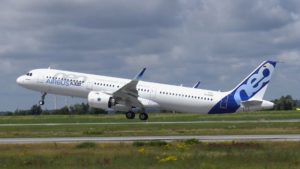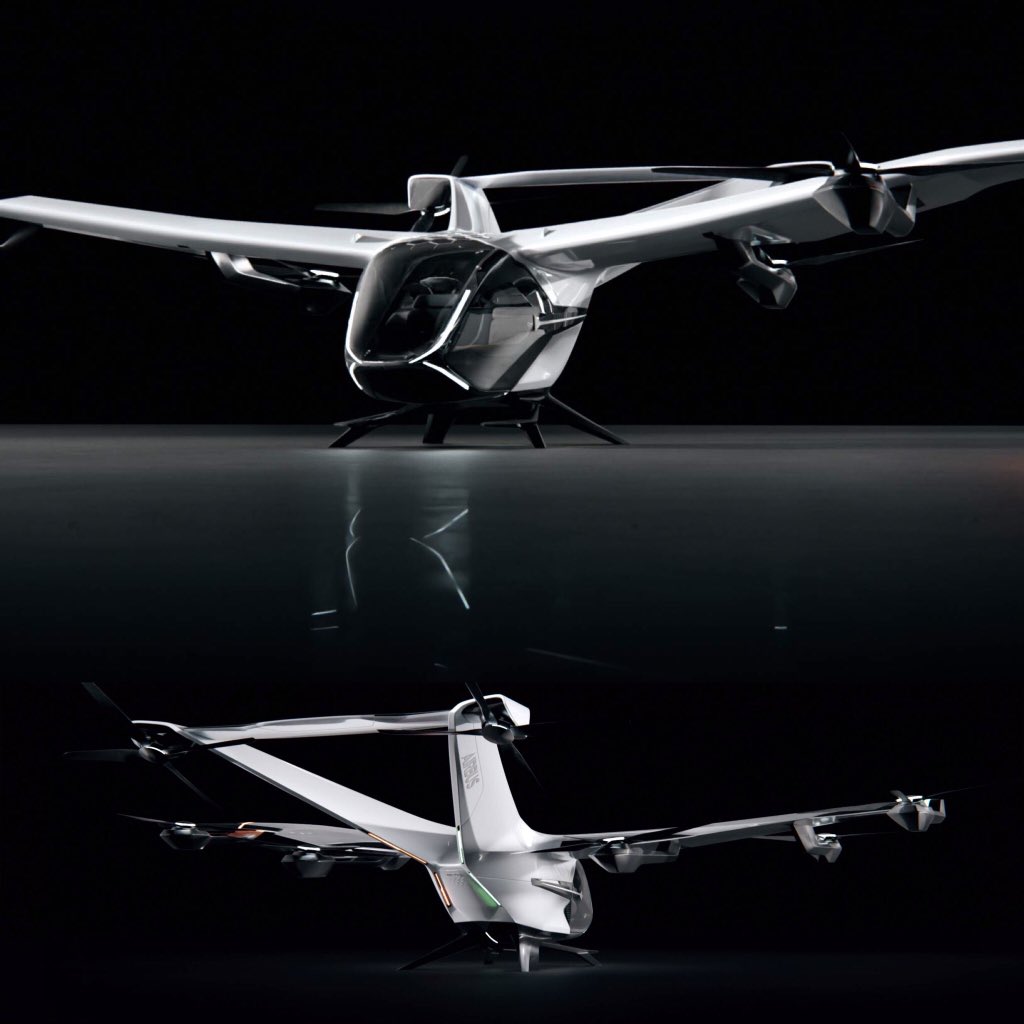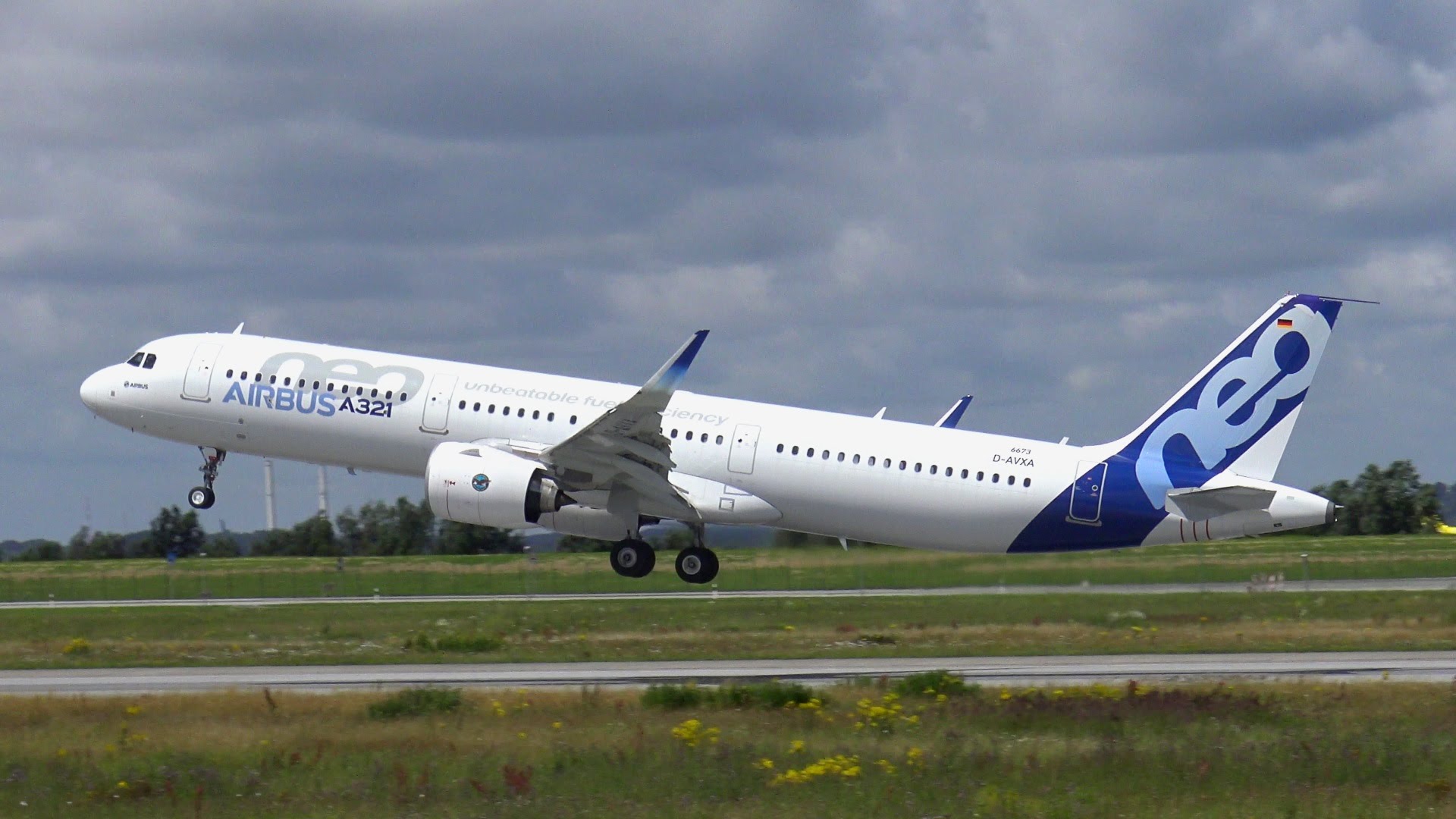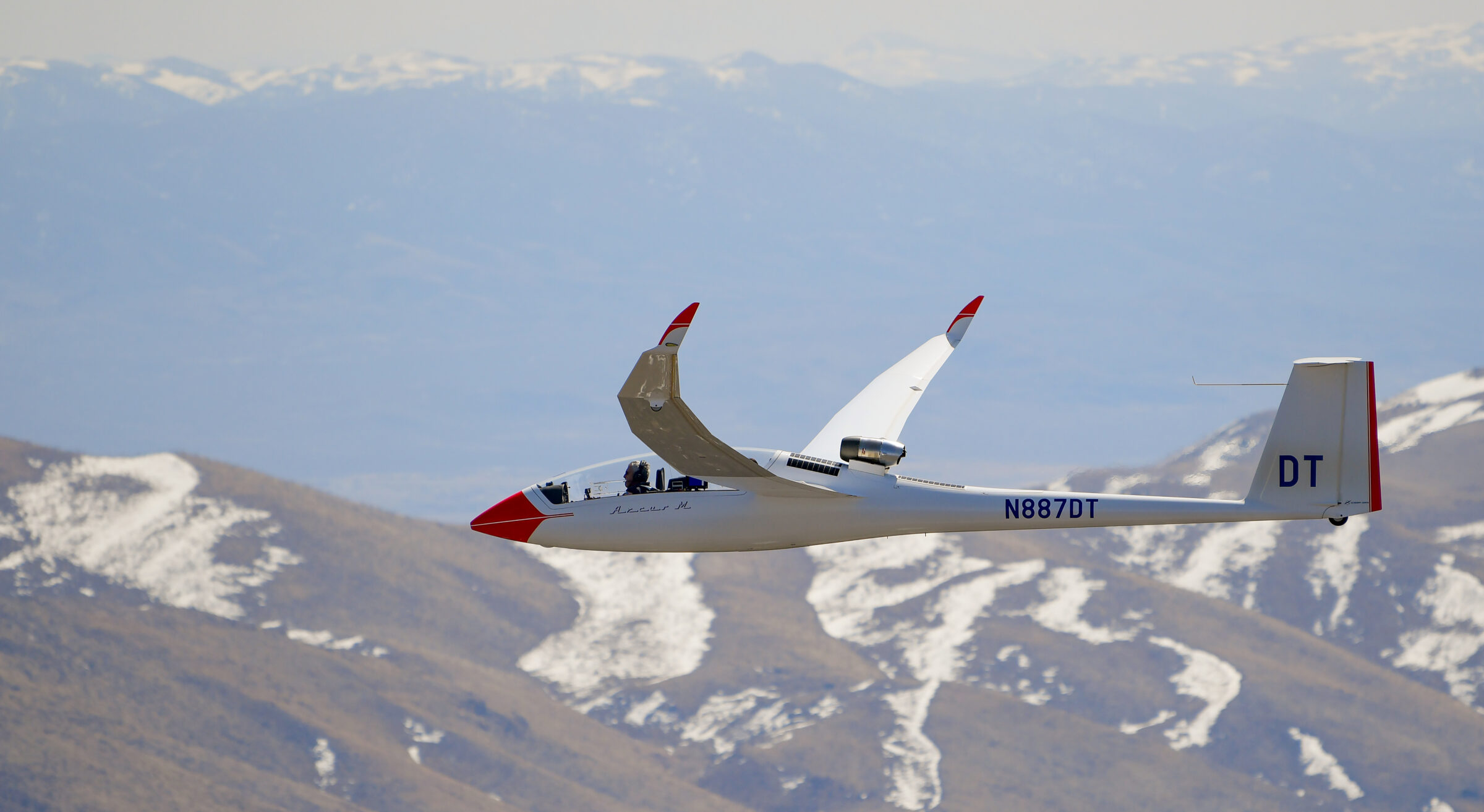Leeham News and Analysis
There's more to real news than a news release.
 Leeham News and Analysis
Leeham News and Analysis
- The Boeing 767 Cross Section, Part 1 November 24, 2022
- Movie Review: Devotion November 21, 2022
- China will accelerate development of its commercial aerospace sector November 21, 2022
- Bjorn’s Corner: Sustainable Air Transport. Part 46. eVTOL comparison with helicopter November 18, 2022
- The economics of a 787-9 and A330-900 at eight or nine abreast November 16, 2022
Retrospective: 2011 pros and cons of composite airplanes as Boeing, Airbus look to next 20 years
Subscription Required
By Scott Hamilton

What will the Future Small Airplane look like? Composites, metal, or a combination? Concept Credit: Leeham News.
Aug. 29, 2022, ©Leeham News: Airbus and Qatar Airways are in a nasty court battle over composite degradation on the A350. Lightning strike protection is a major concern in the Qatar lawsuit. Paint begins to strip off composite materials on the A350 and Boeing 787. Building composite airplanes is expensive.
Composites have been on airplanes since the days of the Boeing 727 when the wing-to-body fairings were made of composites. Airbus put composite vertical fins on the A310 and A300-600R. Private airplanes used composites.
But it was the Boeing 787 that became a ground-breaking airliner with its composite wings and composite fuselage. Boeing’s launch of the 787 in December 2003 was what would later be described as a moonshot. It was the first “all” composite airplane. (About 52% by weight was composite.)
It was the first “all-electric” aircraft, meaning all systems were powered by electric energy. Boeing intended that this would be a “snap-together” airplane. Fuselage sections were to be “stuffed” when delivered to the final assembly line in Everett (WA) and “snapped” together, like a prefabricated house. Outsourcing to industrial partners was taken to unprecedented levels at Boeing. (Airbus already largely practiced this for its aircraft.)
Posted on August 29, 2022 by Scott Hamilton
Orders at Risk: Summer 2022 Snapshot
Subscription Required
By Vincent Valery
Introduction
Aug. 22, 2022, © Leeham News: The ink has now dried on the orders signed at the 2022 Farnborough Air Show. Boeing announced more orders than Airbus, mainly because of a sold-out A320 production line well into the future. Airbus also announced orders shortly before and after the Air Show.
Airbus and Boeing also disclosed their second quarter of 2022 earnings and July orders and deliveries, the first post-Farnborough update. OEMs are more likely to reassess the quality of their order books before disclosing future earnings.
Airbus and Boeing have outstanding orders with airlines where there is a material probability some orders won’t translate into deliveries. Most were the result of airlines encountering financial difficulties, but some were related to contractual disputes. Boeing flags such orders as subject to an ASC 606 accounting rule adjustment.
Unlike Boeing, Airbus isn’t subject to an accounting rule like the ASC 606 adjustments. Therefore, the European OEM does not break down the orders at risk of cancellation by the program. Airbus only discloses the nominal value of its total adjusted order book in its annual report.
LNA analyzed July 2020, November 2020, August 2021, and February 2022 Airbus’ and Boeing’s order books to identify orders at risk and come up with an apples-to-apples comparison. We update this analysis with the latest order books from both OEMs. The above links explain our methodology and its differences with Boeing’s ASC 606 adjustments.
Summary
- Lingering order book cleanup for older programs;
- The Boeing-China factor;
- A healthier single-aisle Boeing order book;
- Updates on the A330neo and large twin-aisle aircraft order books;
- One aircraft variant stands out.
Pontifications: Airbus nears 800 sales for A220, but major challenges continue
Aug. 15, 2022, © Leeham News: Airbus now has nearly 800 orders for the A220, but the program is years from profitability and production faces supplier challenges like those facing the Airbus A320neo and Boeing 737 MAX.
Passenger experience easily exceeds the older design A320 and 737. The A220’s 2×3 seating, 18.5 inch window/aisle seats, 19-inch wide middle seat and wide aisle draw kudos. The windows are larger than the older airplanes. Economics are better than promised by Bombardier, which designed the airplane as the C Series.
Exiting Commercial Aviation
Development costs, neglect of the Bombardier Q400 and CRJ programs and concurrent development of two new corporate jets nearly bankrupted Bombardier. To save itself, Bombardier exited commercial aviation and killed one of the two corporate jet developments. The Q400 program was sold to Longview Aviation, which rebranded the turboprop its original name, the Dash 8-400, and adopted the legacy company name, De Havilland Canada.
The CRJ program was sold to Mitsubishi Heavy Industries. MHI had little interest in the CRJ regional jet. Interest was in acquiring the CRJ global product support and MRO system as a groundwork for the M100 SpaceJet it was developing. (MHI later changed CEOs in its policy of rotating the leadership. The new leaders killed the SpaceJet program, the reason for buying the CRJ in the first place.) MHI last year seriously considered restarting production of the CRJ. This idea was abandoned only last month.
The C Series was sold to Airbus in 2017, the first of Bombardier’s commercial programs to go. The impetus was a complaint filed by Boeing with the US Department of Commerce in 2017. While Commerce was assessing the complaint, Bombardier agreed to sell 50.1% of the program to Airbus. BBD was committed to fund construction of an assembly plant at Airbus’ Mobile (AL) complex and cover up to $700m in losses. (Commerce eventually upheld Boeing’s complaint and levied a 292% tariff. But the required review by the Court of International Trade found Boeing suffered no harm in a deal with Delta Air Lines that triggered the complaint. The CIT’s finding killed the tariff.)
Bombardier was unable to fulfill its commitments to Airbus, which eventually bought out Bombardier’s remaining share of the program. (A Quebec, Canada, pension fund still retains about 25% ownership of the program.)
Posted on August 15, 2022 by Scott Hamilton
Bjorn’s Corner: Sustainable Air Transport. Part 32. Mixed architectures, Part 2.
August 12, 2022, ©. Leeham News: Last week, we looked at two eVTOLs that don’t fit the terminology we use; Multicopters, Vectored thrust, or Lift and Cruise, the Vertical VX4, and the Archer Maker. We look at Airbus’ CityAirbus NG this week, a Lift and Cruise design like no other (Figure 1).
Posted on August 12, 2022 by Bjorn Fehrm
The industries’ CASM trap
Subscription Required
By Bjorn Fehrm
Introduction
August 11, 2022, © Leeham News: The airliner world measures efficiency in CASM, Cost per Available Seat Mile, and RASM, Revenue per Available Seat Mile. An airliner with more seats then has lower CASM or RASM.
Looking at seat counts, we can see that the hottest selling single-aisle, the Airbus A321neo, is closing the gap to widebodies like Boeing’s 787-8 and Airbus’ A330-800.
So it’s CASM, and RASM should be phenomenal. Or is it? Are we comparing correctly, or are these Apples and Oranges comparisons? We use the cabin generator of our airliner performance model to understand it better.
Summary
- The measurement of economics per seat makes sense for internal airline work.
- When comparing different airliner types in the same size class or between types (single-aisle, widebody), it’s the wrong method.
Posted on August 11, 2022 by Bjorn Fehrm
Dual or Single Aisle for Long Haul, Part 3
Subscription Required
By Bjorn Fehrm
Introduction
August 4, 2022, © Leeham News: We’ve been analyzing whether flying long-haul is better with a single-aisle or with a widebody under identical conditions.
To have equal conditions, we fly between Milano and New York at the practical range limit for our single aisle, Airbus A321XLR. We finished the analysis of Cash Operating Costs; now, we look at passenger and cargo yields and the generated margins on the trips.
Summary
- The margins with identical conditions point the same way as the Cash Costs.
- Any cargo traffic on the route will favor the widebody.
Dual or Single Aisle for Long Haul, Part 2
Subscription Required
By Bjorn Fehrm
Introduction
July 28, 2022, © Leeham News: Two weeks ago, we started looking at the most economical way to fly long-haul. The single-aisle alternative or stay with the trusted widebody?
We laid out a route on the practical range limit for an Airbus A321XLR, Milano to New York. With typical headwinds (as we fly west), it’s close to 4,000nm for the aircraft. The first analysis was for fuel burn. Now we add other costs to form Cash Operating Costs.
Summary
- The fuel burn points one way, the Cash Operating Costs another.
- The background is different costs scale differently with size.
Farnborough Air Show winds up with post-pandemic slow pace
By Scott Hamilton
July 22, 2022, © Leeham News: The Farnborough Air Show produced little in the way of headline news. But Boeing comes away with some momentum. Airbus announced a big order on July 1, well ahead of the show, from China, leaving show orders in high double digits.
 Boeing announced orders and commitments for 278 737 MAXes, including 100 firm and 30 options from Delta Air Lines. This order was the first from Delta in 11 years, ending a long-running behind-the-scenes streak of sour relations between the companies.
Boeing announced orders and commitments for 278 737 MAXes, including 100 firm and 30 options from Delta Air Lines. This order was the first from Delta in 11 years, ending a long-running behind-the-scenes streak of sour relations between the companies.
The order, for the 737-10 MAX, finally fulfills Boeing’s goal of getting the -10 into Delta. Boeing had counted on Delta being a launch customer of the airplane in 2017. As reported in my book, Air Wars, The Global Combat Between Airbus and Boeing, the bake-off between the MAX 10 and the Airbus A321neo came down in favor of the MAX 10. But CFM declined to grant Delta TechOps rights to perform maintenance, repair and overhaul for other airlines and lessors. Pratt & Whitney agreed, tipping the order to Airbus.
Also during the competition, Boeing was engaged in a trade complaint over Bombardier’s sale of the C Series to Delta. Boeing alleged Bombardier engaged in price-dumping, contrary to trade laws. Boeing won the trade complaint and a tariff of 292% was assessed on each C Series imported from Canada. However, the final review found no harm to Boeing, which hadn’t competed for the order, a required element to impose the tariff. Many observers thought Boeing’s timing concurrent with the MAX-neo campaign affected the decision. But as reported in Air Wars, Delta officials said this wasn’t a factor.
Posted on July 22, 2022 by Scott Hamilton
Airbus prepares contrail flight tests
July 21, 2022, © Leeham News at Farnborough Air Show: Airbus is converting two Arcus high-altitude gliders to check if the contrails produced by hydrogen combustion engines create an environmental problem.
The background is that experts can’t agree if the water vapor produced by hydrogen combustion (which merges hydrogen with oxygen to water) can cause global warming or not. The only way to resolve the dispute and gain fundamental knowledge is to fly and measure.
Posted on July 21, 2022 by Bjorn Fehrm
Few orders at Farnborough Day 3
By Alex Derber
(c) Airfinance Journal, July 20, 2022
The Farnborough Air Show is all but over with a few orders announced on Day 3. Airbus executives have now left the show, with no more orders expected from them.
Posted on July 20, 2022 by Scott Hamilton
Email Subscription
Twitter Updates
My TweetsAssociations
Aviation News-Commercial
Commentaries
Companies-Defense
Resources
YouTube
Archives
- November 2022
- October 2022
- September 2022
- August 2022
- July 2022
- June 2022
- May 2022
- April 2022
- March 2022
- February 2022
- January 2022
- December 2021
- November 2021
- October 2021
- September 2021
- August 2021
- July 2021
- June 2021
- May 2021
- April 2021
- March 2021
- February 2021
- January 2021
- December 2020
- November 2020
- October 2020
- September 2020
- August 2020
- July 2020
- June 2020
- May 2020
- April 2020
- March 2020
- February 2020
- January 2020
- December 2019
- November 2019
- October 2019
- September 2019
- August 2019
- July 2019
- June 2019
- May 2019
- April 2019
- March 2019
- February 2019
- January 2019
- December 2018
- November 2018
- October 2018
- September 2018
- August 2018
- July 2018
- June 2018
- May 2018
- April 2018
- March 2018
- February 2018
- January 2018
- December 2017
- November 2017
- October 2017
- September 2017
- August 2017
- July 2017
- June 2017
- May 2017
- April 2017
- March 2017
- February 2017
- January 2017
- December 2016
- November 2016
- October 2016
- September 2016
- August 2016
- July 2016
- June 2016
- May 2016
- April 2016
- March 2016
- February 2016
- January 2016
- December 2015
- November 2015
- October 2015
- September 2015
- August 2015
- July 2015
- June 2015
- May 2015
- April 2015
- March 2015
- February 2015
- January 2015
- December 2014
- November 2014
- October 2014
- September 2014
- August 2014
- July 2014
- June 2014
- May 2014
- April 2014
- March 2014
- February 2014
- January 2014
- December 2013
- November 2013
- October 2013
- September 2013
- August 2013
- July 2013
- June 2013
- May 2013
- April 2013
- March 2013
- February 2013
- January 2013
- December 2012
- November 2012
- October 2012
- September 2012
- August 2012
- July 2012
- June 2012
- May 2012
- April 2012
- March 2012
- February 2012
- January 2012
- December 2011
- November 2011
- October 2011
- September 2011
- August 2011
- July 2011
- June 2011
- May 2011
- April 2011
- March 2011
- February 2011
- January 2011
- December 2010
- November 2010
- October 2010
- September 2010
- August 2010
- July 2010
- June 2010
- May 2010
- April 2010
- March 2010
- February 2010
- January 2010
- December 2009
- November 2009
- October 2009
- September 2009
- August 2009
- July 2009
- June 2009
- May 2009
- April 2009
- March 2009
- February 2009
- January 2009
- December 2008
- November 2008
- October 2008
- September 2008
- August 2008
- July 2008
- June 2008
- May 2008
- April 2008
- March 2008
- February 2008








